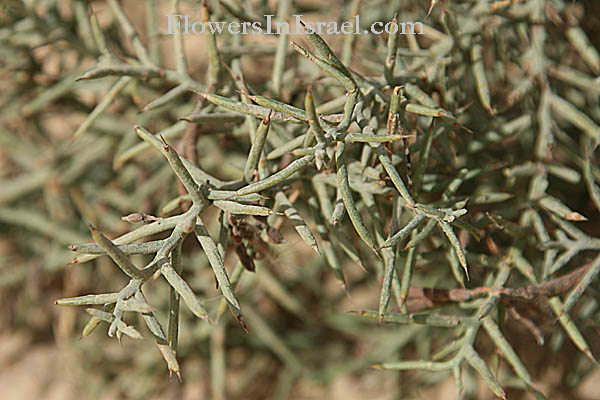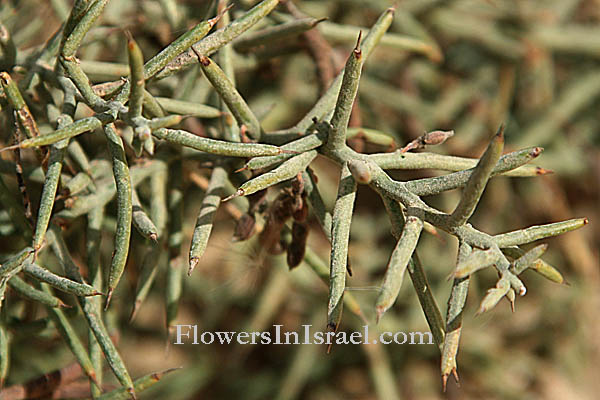Hebrew: מלחנית הערבות, Arabic: شعران ثعلبي
| Scientific name: | Agathophora alopecuroides (Delile) Bunge | |
| Synonym name: | Halogeton alopecuroides (Delile) Moq | |
| Hebrew name: | מלחנית הערבות | |
| Arabic name: | شعران ثعلبي | |
| Family: | Chenopodiaceae, סלקיים |

|
| Life form: | Chamaephyte, semi-shrub | |
| Succulence: | Leaf succulent | |
| Leaves: | Alternate, cylindrical or terete | |
| Flowers: | Green | |
| Flowering Period: | March, April, May, June, July | |
| Habitat: | Sand | |
| Distribution: | Semi-steppe shrublands, Shrub-steppes, Deserts and extreme deserts | |
| Chorotype: | Saharo-Arabian | |
| Summer shedding: | Perennating |

Derivation of the botanical name: Agathophora , aghatos, "good"; -phora, -bearing,- carrying. alopecuroides, alopecuros, αλωπεκουροϛ (αλωπεξ ουρα) Theophrastus: "fox tail, fox brush"; -oides, -οειδεϛ, "like, resemble"; like the genus Alopecurus (foxtail). Halogeton, halo, "salt", -geton, "neighbour"; neighbour of salt.
Agathophora alopecuroides is eaten by camels but not by other stock. At Hoggar,the highland region in central Sahara (southern Algeria), it is crushed and an infusion is taken for liver complaints. It produces an emeto-cathartic effect. |